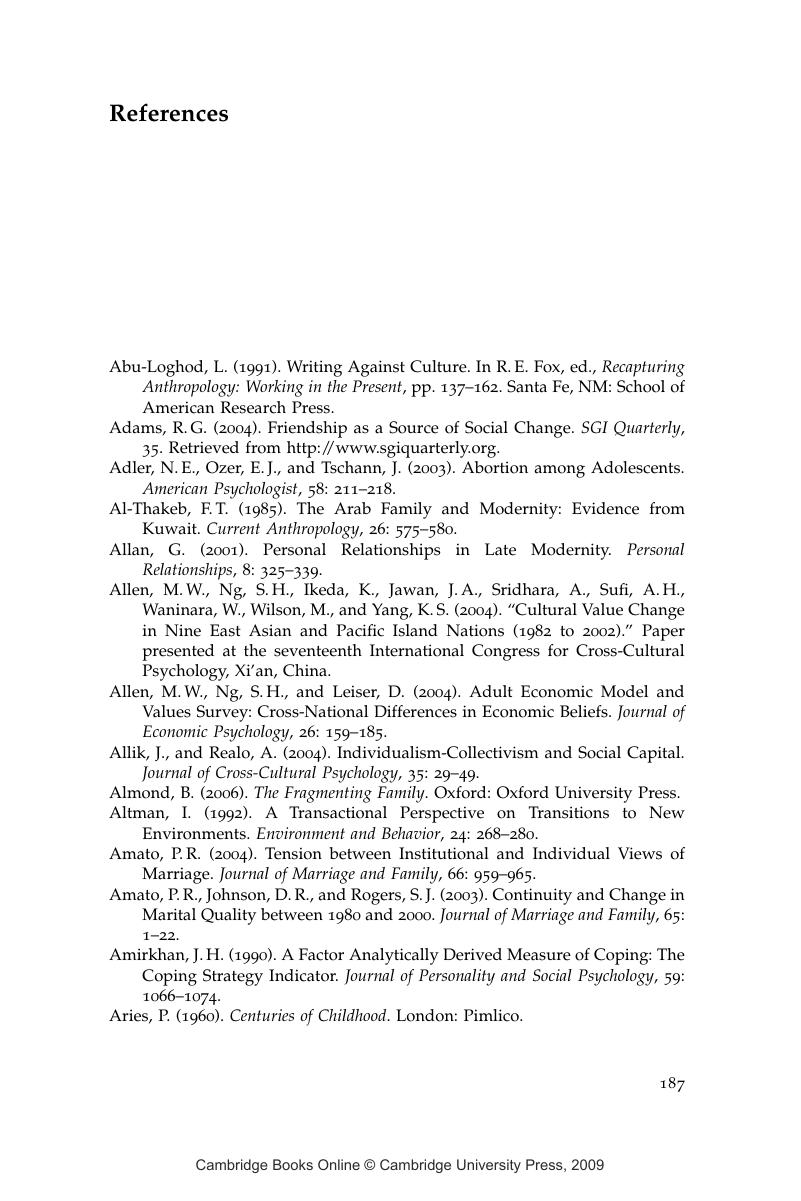Book contents
- Frontmatter
- Contents
- Foreword by Daniel Perlman
- Acknowledgements
- 1 The Nature of Social Change
- 2 The Myth of Modernisation?
- 3 More Beautiful than a Monkey: The Achievement of Intimacy
- 4 Friends and Social Networks
- 5 Sex and the Modern City
- 6 Marriage and the Family
- 7 Modelling Social Change and Relationships
- References
- Index
- OTHER BOOKS IN THE SERIES
- References
References
Published online by Cambridge University Press: 21 October 2009
- Frontmatter
- Contents
- Foreword by Daniel Perlman
- Acknowledgements
- 1 The Nature of Social Change
- 2 The Myth of Modernisation?
- 3 More Beautiful than a Monkey: The Achievement of Intimacy
- 4 Friends and Social Networks
- 5 Sex and the Modern City
- 6 Marriage and the Family
- 7 Modelling Social Change and Relationships
- References
- Index
- OTHER BOOKS IN THE SERIES
- References
Summary

Information
- Type
- Chapter
- Information
- Changing RelationsAchieving Intimacy in a Time of Social Transition, pp. 187 - 216Publisher: Cambridge University PressPrint publication year: 2008
